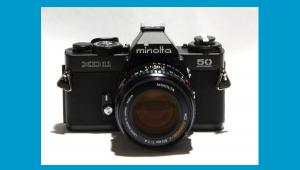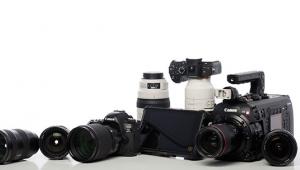New UV and POL Filters from Carl Zeiss
 Starting September 2011, Carl Zeiss will be offering four new diameters for UV and POL filters (circular): 52 mm, 55 mm, 62 mm and 77 mm. With these new sizes, the company is expanding its range of filters, which until now have only been available in diameters 58 mm, 67 mm, 72 mm and 82 mm. Additional diameter sizes will follow in January 2012: 43 mm and 46 mm as UV filters and 95 mm as a UV and POL filter. This will complete Carl Zeiss’ UV and POL filter program for the most common lens diameters.
Starting September 2011, Carl Zeiss will be offering four new diameters for UV and POL filters (circular): 52 mm, 55 mm, 62 mm and 77 mm. With these new sizes, the company is expanding its range of filters, which until now have only been available in diameters 58 mm, 67 mm, 72 mm and 82 mm. Additional diameter sizes will follow in January 2012: 43 mm and 46 mm as UV filters and 95 mm as a UV and POL filter. This will complete Carl Zeiss’ UV and POL filter program for the most common lens diameters.
“The premium Carl Zeiss T* UV and POL filters meet only the highest quality standards,” said Michael Schiehlen, Director of Sales for the Camera Lens Division of Carl Zeiss AG. “The filter threads and optics glasses are adjusted to the lenses from Carl Zeiss, but they are also compatible with lenses from other manufacturers.” The T* coating used onCarl Zeiss lenses is also used on its filters. The T* anti-reflective coating minimizes flare on glass-air surfaces and improves light transmission. Carl Zeiss T* UV and POL filters can be easily changed and used in combination with lens shades. Furthermore, they feature a compact design and front thread. Commercially available lens caps can be used with the filters.
The Carl Zeiss T* UV filters block ultraviolet light; however, they are crystal-clear and fully transparent for visible light. As a consequence, the protective filters enhance image contrast. This is particularly the case with landscape photography by filtering out unwanted wavelengths and making colors appear more brilliant. Because the T* UV filters do not produce a long exposure, they are extremely well suited to protect the front element of lenses from dirt, dust and scratches as well as from minor breakage.
T* POL filters (circular) from Carl Zeiss reduce flare and reflections on non-metallic surfaces, intensifying color saturation and image contrasts. When taking shots of landscapes, POL filters help to remove haziness, intensify blue skies and optimize color separation. With the rotating ring, the desired filter effect can be adjusted according to the camera angle and position of the filter.
- Log in or register to post comments

















































